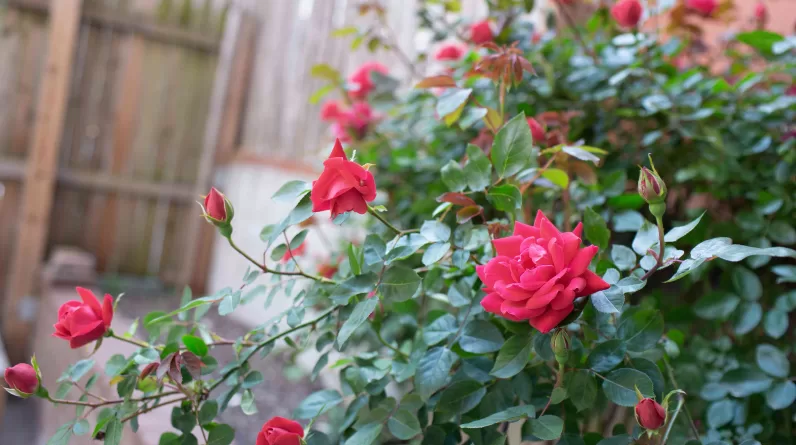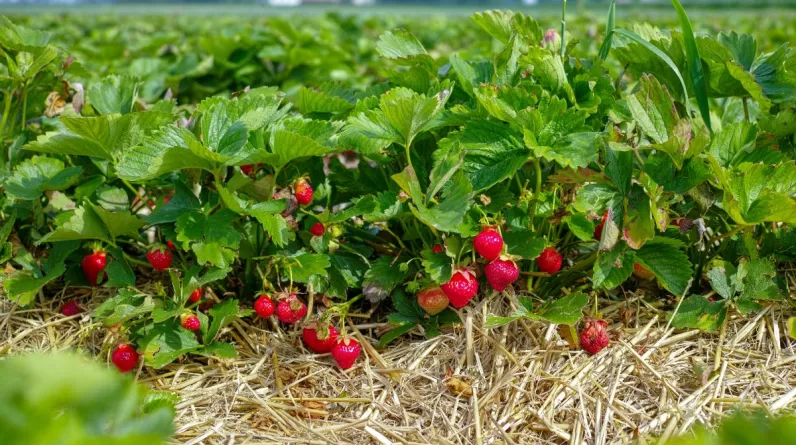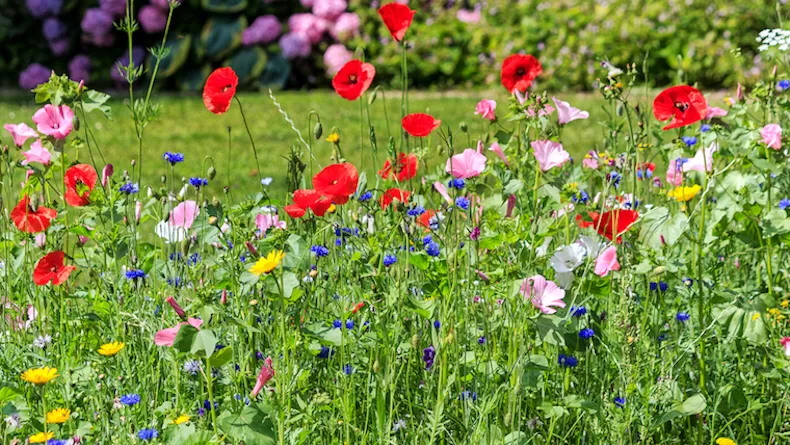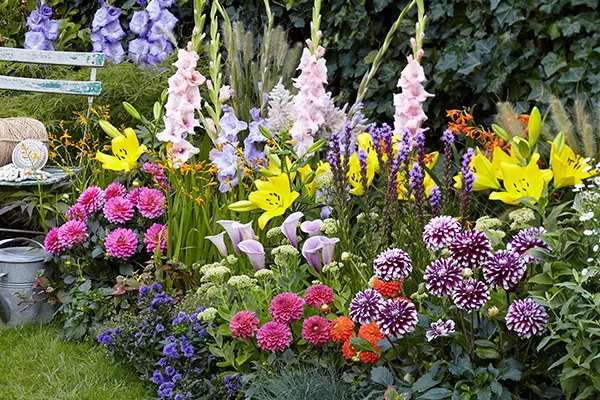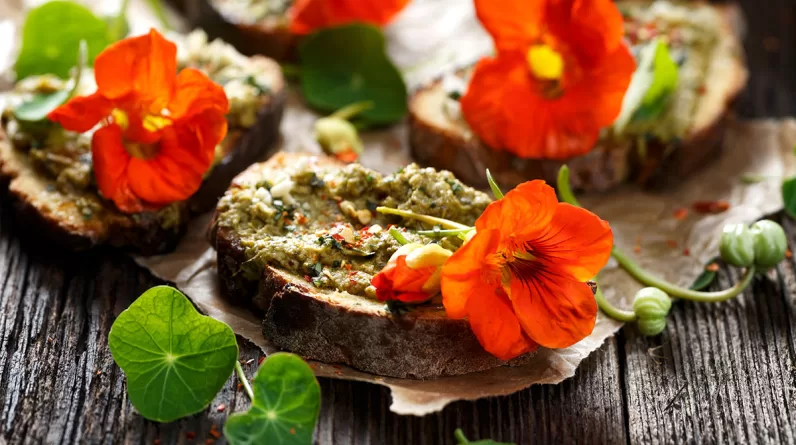Choosing the Right Flowers for Your Garden
Choosing flowers that will thrive in your garden depends on several factors. The climate, amount of light, and type of soil are all important to consider.
For climates with short, cool summers, go with flowers that can handle them like petunias, snapdragons, or impatiens. If you live where it’s hot for long periods, opt for flowers that can stand up to the heat such as geraniums, marigolds, or verbena. For shady spots, try begonias, astilbe, or hostas.
As for soil, some flowers like rich, fertile ground, while others prefer sandy or clay soil. If your soil is on the sandy side, coreopsis, cosmos, and rudbeckia are good options. For clay soil, choose flowers like echinacea, asters, or phlox. And of course, you can always improve your soil by adding compost or other amendments.
Think about height, color, and blooming times too. Include a mix of tall, medium, and short flowers. Choose complementary colors, or different shades of one color for an eye-catching look. And pick flowers that will bloom at different times for continuous color all season.
With the right choices and conditions, you’ll have a garden that’s colorful, vibrant, and tailored perfectly for your space. Do some planning, get the right flowers for your climate and soil, provide seasonal care, and enjoy the fruits (or flowers!) of your labor. Your perfect garden is within your reach if you start with the basics.
Designing and Arranging Your Flower Beds
To create an eye-catching flower garden, you’ll want to put some thought into the design and arrangement of your flower beds.
Layout and Shape
Consider the layout and shape of your flower beds. Curved beds tend to look more natural, while square or rectangular beds have a more formal look. Circle beds and winding paths through your garden can create a sense of mystery.
Height and Color
- Group plants together based on their height and bloom color. Taller plants should go in the back, with shorter plants in front.
- Complementary colors like red and green or yellow and purple make for dramatic contrasts.
- Use the color wheel to choose a color scheme, whether complementary, analogous, or triadic.
Balance and Repetition
- Repeat groupings of the same or similar flowers throughout your garden to tie it all together.
- Aim for balance, with similar numbers of taller and shorter, bushier and upright plants on either side of a path.
Focal Points
- Include a focal point like a trellis, gazebo, large pot, sculpture, or boulder.
- You can also achieve a focal point using a dramatically different flower, color, or plant.
With some thought into layout, height, color, balance, repetition, and focal points, you’ll be on your way to creating a flower garden that will dazzle your neighbors and give you joy for years to come. Get creative – a beautiful garden is a work of art!
Caring for Your Flowers Throughout the Seasons
Caring for your flowers throughout the seasons requires a bit of work, but the reward of a vibrant, flourishing garden is well worth it.
Spring
In spring, fertilize your flower beds to give your plants an energizing boost after winter. Follow the directions on the product packaging for how much and how often to apply based on your flower types.
Be on the lookout for common springtime pests like aphids, spider mites, and beetles. Treat them with insecticidal soap or neem oil sprays. Repellents with citronella or eucalyptus essential oils can also help naturally deter pests.
As the weather warms up, increase how often you water. Most flowers will need an inch of water per week.
Summer
In summer, mulch around the base of your flowers to help the soil retain moisture, prevent weeds, and promote healthy root growth. Organic mulches like compost, grass clippings, and pine needles work great and will enrich the soil as it decomposes.
Deadhead spent blooms to encourage new flowers. Use pruning shears or garden scissors to snip off faded flowers just below the bloom. This simple step can stimulate many flowers like petunias, marigolds, and geraniums to produce new buds.
Water and fertilize regularly following the recommended schedules for your specific flowers. Pay extra attention during heat waves and add a bit more water to help your flowers cope with the high temperatures.
Fall
As fall approaches, reduce and eventually stop feeding your flowers. This will slow their growth in preparation for winter. Continue watering until the first hard freeze.
Mulch around the base of perennials and shrubs after the first hard freeze. This provides insulation for their roots over winter. Remove mulch in spring once the ground thaws.
Inspiring Photos of Beautiful Flower Gardens
One of the best ways to find inspiration for your flower garden is by looking at photos of beautiful gardens created by others.
English Cottage Garden
With a riot of color and texture, cottage gardens embody a casual, romantic style. They feature a mix of flowering plants, herbs, and climbing vines. The overall look is lush, wild, and whimsical. This style works well for small or large spaces.
Cutting Garden
If you love having fresh flowers in your home, consider a cutting garden. It is filled with flowers specifically meant for cutting and arranging like dahlias, sunflowers, zinnias, and gladiolus. The variety of colors and textures will give you abundant options for bouquets and arrangements all season long.
Rose Garden
Nothing is quite as dramatic or fragrant as a rose garden in full bloom. You can focus on one type of rose or incorporate several different varieties. Place roses in a prominent spot in your yard where their beauty and scent can be fully appreciated. Include pathways to make the garden interactive.
Rock Garden
For a low-maintenance yet visually interesting garden, create a rock garden. Select plants that thrive in rocky, well-drained soil like sedum, lavender, poppies, and dwarf conifers. Arrange large stones, boulders, or gravel artfully and tuck the plants around and between the stones. The key is to choose rock garden plants that require little watering or pruning.
Butterfly Garden
To attract colorful and lively visitors to your garden, plant a butterfly garden. Include clusters of bright flowers that butterflies and their caterpillars prefer such as milkweed, butterfly bush, coneflower, asters, sunflowers, and mint. Place the plants close together in a sunny spot in your yard. Add a water feature like a birdbath to provide drinking spots for butterflies. Your garden will soon be fluttering with orange, yellow, and blue wings.


